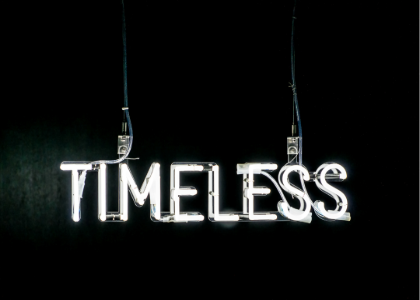Blog

How to Create a Color Palette for Your Logo and Brand Image
When creating your logo, there are several elements to consider. First, there's the type of logo. Do you want to create a logo that is solely of your company's name or a symbol? You'll also need to choose a font if text is involved. What about colors? Colors remain one of the most important components of your visual identity. Let's take a look at how to create a color palette not only for your logo, but also for your brand image.
What purpose does a color palette serve?
First, what is a color palette? In a nutshell, it's a palette of different hues, a set of colors used together to create a visual world. When a company or sports team needs a logo, colors aren't chosen at random. Since colors have meaning, a palette can be used to convey a specific message while maintaining a certain harmony. A color palette is made up of three to five different shades.
Can a logo's color palette be different from that of the brand image?
Before giving you our tips for creating a color palette, it's important to remember that logo and brand image are two different things. According to Semji, brand image is the representation of a brand, company, product, or service. It consists of all the visual components associated with the brand.
It's true that the logo is the most important component of the brand image, but the tone, type of images, fonts and colors are also part of it. To answer our question, in order to maintain consistency, you should use the colors of your brand image when creating your logo. However, it's not necessary to use them all. If you notice that the colors of your logo don't work with those of your brand image, it's important to think about creating a new color palette. It's also worth mentioning that it's recommended not to use more than three colors for your logo, again to maintain consistency and flexibility.
How to create a color palette
Ready to get started? Here are a few steps and tips to help you create a color palette that suits your needs.
Define your values and message
Despite what you might think, the first step is not to choose a color, but to take the time to define your values and, above all, your message. As we mentioned earlier, colors have meaning. By choosing the right hues, you can say more about your values, but also about your target clientele.
Take a sheet of paper and write down all the words that best describe your company and its values. You can also think of important components you'd like to promote on your logo, such as an emblem or a recognition of where you are from.
Choose a dominant color
Once you have the list of keywords, it's time to choose a dominant color. McDonalds chose red, while Starbucks selected green. Nothing has been left to chance. There's bound to be a color that represents your values. For example, blue is associated with confidence and accessibility, while orange often represents the world of entertainment and youth.
The dominant color will be the most important color in your color palette. It will be the main color of your logo and brand image.
Think secondary color
Now back to the first step: values. If we exclude your dominant color, is there another hue that could help you convey the desired message? The secondary color is there to support the dominant color in your message. The combination of these colors should represent you well.
Let's say you've chosen blue as your main color; the secondary color can give different looks. If you choose red, it has the advantage of attracting attention, because it's a warm color. It can also emphasize a patriotic side. On the other hand, if you choose green, which is another cool color, it can show your ecological or health-related values.
Determine the other colors
As well, depending on your needs, you'll need other colors. For example, it's common to use black or white as an accent color. It can also be a very different color from the first two. Above, we said that a color palette includes between three and five different shades. You could also choose shades that are slightly lighter or darker than your main color.
To ensure that your color palette meets all your needs, remember to have enough contrast between certain shades. This way, you'll be able to use your palette not only on your logo, but also on social networks, your website or printed documents.
Coolors: the pallet generator
If you don't get a satisfactory result, don't panic! There are many tools on the web that can help you create a color palette to suit your needs. One of our favorites is Coolors. It's a palette generator. You can create custom palettes or take a look at existing ones. It can be a good starting point if you want to create a color palette for your logo or branding.
In conclusion, we believe that by following these steps, you'll be able to create a color palette that you can use for both your logo and branding. Once you've chosen your shades, don't forget to record the different color codes in a brand guide. This will give you consistency, which will make it easier for people to recognize you. Good luck!
More tips and tricks on the blog


